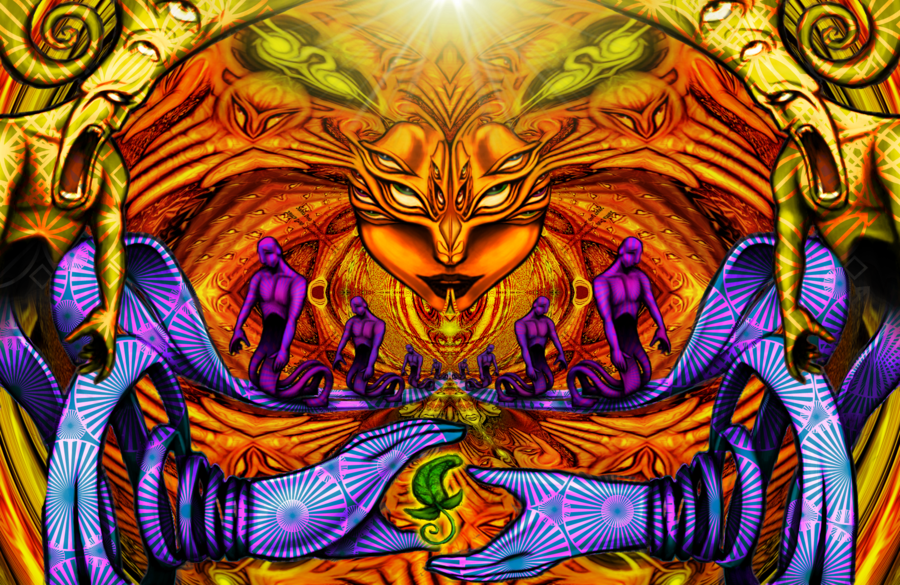It’s always important to know what the scam is, what the con job is. Obviously it’s important to know that. The con job which is society is an easy one to explain, even though no one will ever admit it, and we can explain it as follows. The scam in question – in very simple terms – is that if we do all the things that we are told to do and engage in all the activities we are led to believe we ought to be engaging in, then this will be both to our own benefit, and the benefit of everyone else. This isn’t at all true however (it wouldn’t be a scam if it were) but we very rarely get to see this. Even if we do see it and then try to tell other people about what we have discovered, no one is going to believe us! Someone – or so we could say – benefits from the social game, but it isn’t us. It’s not the people who are playing the game who benefit.
The reason the scam that we’re talking about here is a scam (and not an honest transaction) is because we are giving something and not getting anything back in return. Or rather, it’s because we are getting something back, but what we’re getting back is very much to our disadvantage. It seems at the time to be beneficial to us, to be advantageous to us, but that’s just not the way things are. This situation – the situation where we can be conned, the situation where we are susceptible to being scammed – arises because of our deep-seated confusion with regard to ‘who we are’ We are provided with an identity by the social milieu (it’s very good at doing this) but this identity is only ‘arbitrarily true’, which is to say, it isn’t true at all. It’s a role, in other words; It’s a part in a play. We are given a part to play and we play it as best we can, and as we play it we come to believe that this is who we really are. We get hypnotized by the script, by the narrative. Because we believe that this is who we are we are now in the market for all those things that are potentially advantageous to ‘the identity we think we are’, and so what we have done here is that we have created a self-reinforcing loop!
This is of course not a way of looking at things that ever occurs to us; naturally it doesn’t occur to us because we are always looking at things via the viewpoint that we have been conditioned to have, via the viewpoint which belongs to the role we are playing without knowing we’re playing it. Once we get caught up in this loop it’s very hard to see how we could ever get out. There’s nothing there within the loop that can let us know that it is a loop – it is in fact a perfect self-contained world. It’s a pseudo-world that doesn’t let on to itself what its real nature is. It’s not a legitimate world it is true, but that doesn’t mean that the Loop World doesn’t possess very great stability – once set up it will carry on spinning and spinning indefinitely just like some of crazy sort of perpetual motion machine. This crazy ‘perpetual motion machine’ is the trap of <our false identity> and <the world which that false identity lives> (and which has now become the only reality we are now capable of knowing about). We can’t see beyond the ‘false world’ – we can’t see that there is any reality beyond it because everything we see is seen from the viewpoint of the role we are playing but don’t know we’re playing.
What’s happening here, if we are to dip into the language provided by Ernst and Christine von Weizsacker’s Model of Pragmatic Information, is that we confirmation has replaced novelty and as a result we have become subsumed within ‘the Universe of Confirmation’. Once we fall into the ‘closed-loop’ way of seeing things then everything we see is ‘confirmation of the viewpoint that we have assumed without knowing it’. Creating the loop of <conditioned viewpoint> plus <conditioned view> immediately splits the word into two types of information: [1] is C-Type information, which is information that agrees with our assumed viewpoint for looking at the world and [2] is N-Type information (or novelty) which is information that doesn’t make any sense at all to us This significant thing about this is of course that confirmation isn’t really information at all (since it is only it is arbitrarily created by our way of looking at things) whilst the true (or honest) type of information, which is novelty, is a thing we have to ignore (and discount as regrettable error) if we are to continue living in the Universal of Confirmation. This is obvious enough – it’s just another way of saying that the mechanics of living in the loop of <viewpoint> plus <the view that the viewpoint producers> involves us taking what lies in the loop seriously and turning a blind eye to everything else. We have created a boundary that we can’t see to be a boundary, a boundary that contains us without us realizing that anything untoward has happened.
The ‘the view’ is socially-produced world therefore, and ‘the viewpoint’ is the socially-conditioned identity. Very clearly, the socially-created identity can only have its existence in the world that is brought about by our ignoring or denying everything that doesn’t match our prescribed viewpoint. The conditioned self can only exist if the conditions that created it continue to be in place, obviously enough. Its existence depends on our ongoing denial (or ‘one-sidedness’), in other words. The conditioned identity depends upon our ongoing narrow-mindedness, it depends upon the continual and unremitting reinforcement of our fundamentally prejudiced outlook in life. Our allegiance – as the conditioned identity – is always going to be towards the system that underwrites our existence and because this is where our allegiance lies it is also where all our endeavour goes, where all our energy goes. All our energy goes into maintaining the loop, and into making it spin faster and faster, and this is why the loop (whether we see it as being <the conditioned identity> or <the world that is that the condition identity lives in>) gets to be so very stable.
As the loop spins around faster and faster it shrinks however, and the more it shrinks the worse we feel, although we don’t know it. We are being more and more limited, and even those these limits are invisible to us, they are very far from being without effect. The loop keeps on shrinking, keeps on getting tighter and tighter, keeps on closing around us more and more because this is the only thing it can do! The entropy of a closed system always increases, after all, and the loop of <our viewpoint> and <the view which that viewpoint gives rise to> is the quintessential closed system. The loop of <the conditioned identity> and <the world which that identity lives in> is the quintessential closed system. What we are referring to here as ‘spinning’ can also be spoken of as compulsivity – ‘compulsivity’ meaning the sense of absolute necessity that is conditioned into us by the system, by the machine. When we’re living with in the polar world that has been forced upon us by the machine (or by ‘the loop’, or by ‘the system’) then we are always going to be subject to this conditioned sense of necessity. It isn’t real, it’s only there because the functioning of the system makes it be there, but as far as we’re concerned (as conditioned beings) it’s something that we can’t have ever question. Compulsion is the brute fact of pre-programmed existence; it is the force that makes us who or what we are.
Again – as we have already indicated – we don’t experience this compulsivity, this sense of absolute necessity, as being something that is ‘imposed on us from the outside’. On the contrary, we experience this extrinsic (or ‘externally originated’) motivation to be our own will. The loop of <conditioned identity> plus <the world that the conditioned identity lives in> is all the same thing and so whenever we act on the basis of extrinsic motivation – which is what we do all the time – all that’s happening is that we’re causing the loop to spin even faster. It’s not that we’re ever getting any closer to some desirable or necessary outcome, which is what we very much imagine; all we’re doing is digging a deeper and deeper hole for ourselves, whilst being under the hallucinatory impression that we are ‘progressing’, or that we stand to progress if we run fast enough or control effectively enough, and the counterproductive nature of our efforts remains completely invisible to us. It is invisible to us until the spinning gets tight enough, and therefore painful enough, to be visible as actual proper neurosis (which is to say, ‘pointless or counterproductive effort’).
Everything that takes place in the closed loop world of <VP> plus <the view that is produced by the VP> is neurosis when it comes down to it – it’s just that we can’t see it, it’s just that we take it as being ‘normal’. A good definition of neurosis is to say that it is ‘that self-defeating situation which has been brought about by us trying to fix a problem that has been brought about by our attempts to fix that problem’. We’re trying to escape a pain-producing predicament by utilising the very strategy that has given rise to that predicament. Or – as it is more traditionally expressed – neurosis is the result of our compulsive attempt to avoid our legitimate suffering even though by compulsively trying to avoid this suffering we are creating even more suffering, which we will then try to try to avoid in exactly the same way. The beauty of acute neurosis is precisely that ‘the self-devouring loop’ has now become visible to us (even though ‘beauty’ is of course not a word that we would generally use in this connection). The self-strangling loop has however only become visible to us in the sense that we can now feel the counterproductivity of what we are doing first-hand, in the form of escalating suffering (which is how counterproductivity always shows itself). This is an important first step – we might say – but the essence of what is happening here (the essence of what we have embroiled ourselves in) does not become apparent to us quite as easily. This is something that only dawns on us when we take an actual interest in our suffering (instead of just mechanically reacting to it) and become aware of how we are bringing it about. The acute and insupportable suffering of neurotic conflict thus becomes an escape route out of the loop, loath as we are (culturally speaking) to seeing this. Society does not wish to be made aware of its own counterproductivity, its own ‘loop-like’ nature!
It is very much a possibility that neurosis can be a doorway to insight, and thus to freedom from the self-consuming loop of <VP> and <the view that the VP gives rise to>, but unfortunately for us our rational-interventionist culture steps in at this point and takes us in entirely the wrong direction. The loop tries to cure itself, in other words! What we do when we start to feel the squeeze that is being put on us by the tightening loop (or by the tightening screw) is that we go looking for answers that are being provided to us for us by the loop itself. We place our trust in the very thing that was putting the big squeeze on us in the first place, in other words. We’ve been railroaded into doing this however because, as we were saying earlier, confirmation is the only type of information (even though it isn’t really ‘information’ at all) that has credibility for us. Confirmation is the only type of information that the thinking/conceptualising mind will deal in and the thinking or conceptualizing mind is our sole means of relating to the world. What choice do we have, therefore? And yet – despite this terrible predicament – there is a response that we can make, even under such desperate circumstances as this. The only thing is, it has to be our response supposed to be, we can’t have any truck with anything that anyone else is telling us, not even if they happen to be highly-trained mental healthcare professionals (especially if they happen to be highly-trained mental healthcare professionals). There’s only one thing that matters here – something which acts as a kind of a ‘pivot’ that the whole business turns on – and that is that the response to situation should come from the individual concerned.
No one else can have any input, no one else is allowed to stick their oar in – no matter how much we might like for them to! What opens the ‘door’ for us is novelty not confirmation (confirmation is the language of the group, the language of the system) and the very interesting thing about this is that only the individual can perceive novelty. The ‘group-adapted person’ can only ever relate to confirmation; the game-player can only ever relate to confirmation because anything else isn’t ‘the game’.






